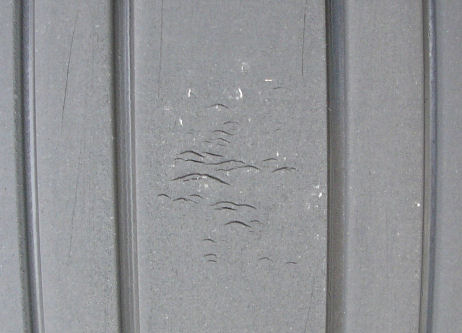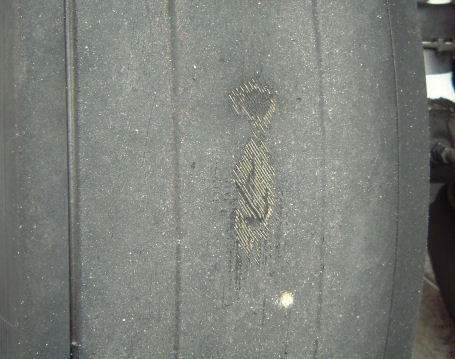 Tire Wear
Tire Wear
Home > Tech Photos > Walkaround > Tire Wear
Contents
The AMM gives the following guidance for tire inspections:
Examine the tires for air leaks, abrasions, unusual worn areas, cuts, and flat spots.
Remove the tires that have the conditions that follow:
1) Cuts or weather cracks in the grooves, the tread, or the sidewalls which go to the cord body.
2) Blisters, bulges, or other signs of ply separation in the tread or the sidewall area.
3) Tires with a flat spot which shows the tread reinforcements/cut protector.
4) Other types of damage which can cause tire problems.
Examine the tires for worn areas:
1) Measure the tread depth at three points that are equally apart in the tire groove.
2) If the average tread depth on any groove is 1/32 inch (0.79 mm) or less, the tire is not serviceable and must be replaced.
3) If the tread belt ply (fabric) shows at any location, the tire is not serviceable and must be replaced.
4) If the tread reinforcement/cut protector (steel) shows at any location, the tire is not serviceable and must be replaced.
NOTE: If the tread reinforcement/cut protector (steel) shows, the tire may be used without safety concerns, but if the tire is left in service you may not be able to re-tread the tire.
In simple terms: Tires should be removed when tread has worn to the bottom of any groove at any spot. Tires have varying numbers of plies, and on some tires, wearing through any layers leaves too small of a safety margin. Wearing to the bottom of the groove is the best compromise point between safety and obtaining the most landings.
All of the information, photographs & schematics from this website and much more is now available in a 374 page printed book or in electronic format.
*** Updated 05 Aug 2023 ***




